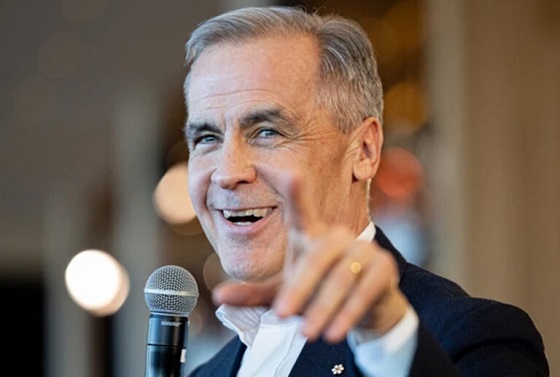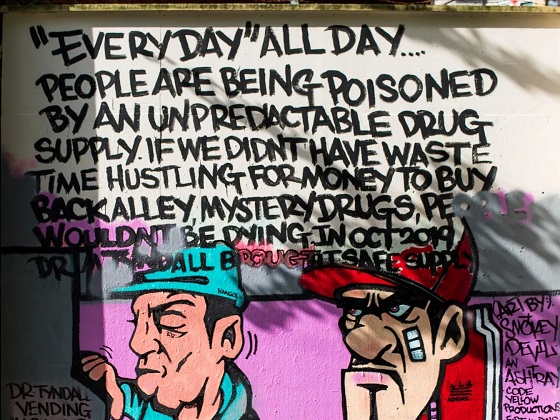Opinion
Latest report on pollution validates my Reason #4 for not supporting the status quo.
Red Deer Advocate has a story detailing a report about our poor air quality being from human activities and needs government, industry and individual co-operation.
Anyone who has been following my blogs or reading my letters to the editor will know this is what I have been talking about for years. It also validates my reason #4 on why I cannot support the status quo blogged on Today Ville .com.
# 4 reason I cannot support the status quo is our air quality. We have the poorest air quality in Alberta and Alberta has the poorest air quality in Canada. Riverside Drive monitors have been in “requires immediate attention” range for years.
The report reads; “Red Deer air quality has exceeded national standards for fine particulate matter for three consecutive reporting periods — 2009-11, 2010-12, 2011-13.”
How long do we wait after the alarms go off, 5,6,7,8 years? The alarms started going off in 2009 and we watched, debated and waited for 8 years. I know we put up “Idle free zones” at schools etc. but we could have done more.
Part of the report talks about emmissions. Does it make any sense then to compartmentalize the city. All industries in the Northwest part of city, all high schools in the east/southeast extreme edges of the city, all new facilities built on the south side of the river creating a commuting city.
A blog I wrote in January, followed by CBC news from 2015 and a statement made by the Environment Minister.
My blog from January:
There are provincial quality standards for the air we breathe. Since 2010 our air quality has been in the “Requires Immediate Attention” category. The air in Riverside Park is the worst area in Red Deer. I have been writing about it for years.
A report came out, telling us to breathe easy, because downtown Edmonton is a little bit worse and downtown Calgary is worse yet. So Riverside Park is okay because it is only the 3rd worse in Alberta. Fort MacMurray was worse during the forest fires, but as a whole the oilsands city is better than Red Deer.
So, everyone relax, the air is worse in the concrete jungle in our 2 large cities, why worry? Lethbridge, has about the same population, and cleaner air, but we are better than Jasper Avenue by a point.
We can always console ourselves with comparing our air with Toronto.
How can we be so smug by comparing us to a high density area like downtown Calgary. If we wanted to live in an asphalt jungle with poor air, we would move there. If the air quality was better than all of Calgary or all of Edmonton, they would have reported it, but they didn’t. They found 2 areas, high density, high traffic areas that have poorer air and declared; we are not the worse. Let us celebrate.
Leduc has cleaner air, Airdrie has cleaner air, Nisku has cleaner air, and Lethbridge has cleaner air. Standards tell us, and have been for years, that “immediate action required” and I do not think that looking for pockets of poorer air is what they meant.
I guess I will have to be happy, that downtown Calgary and Edmonton have worse air than Red Deer. I am just giddy, not.
Compare apples with apples, and oranges with oranges. We know when we are being sold a line. By the way, the alarms are still going off. Remember” REQUIRES IMMEDIATE ATTENTION”.
“CBC NEWS” SEPTEMBER 9 2015
Alberta on track to have worst air quality in Canada
Red Deer has worst pollution in province, while 4 other regions close to exceeding national standards
Alberta Environment Minister Shannon Phillips says the province is on track to have the worst air quality in Canada, and vows the government will put measures in place to reduce emissions from industry and vehicles.
“The time to act is long overdue,” Phillips said.
“We have a responsibility to do everything we can to protect the health of Albertans.”
Phillips made the remarks after seeing the results of the Canadian Ambient Air Quality Standards report, which show the Red Deer region has exceeded national standards. Four other regions — Lower Athabasca, Upper Athabasca, North Saskatchewan and South Saskatchewan — are close to exceeding national standards.
Phillips said there is no immediate health risk for people living in central Alberta.
“These results are concerning,” Phillips said in a news release. “We can’t keep going down the same path and expecting a different result. Our government has a responsibility to protect the health of Albertans by ensuring air pollution from all sources is addressed.”
The province will initiate an “action plan” to deal with poor air quality in the Red Deer area, a move she said is required under the Canadian Ambient Air Quality Standards.
The government said a scientific study looking into the cause of the air pollutants is currently underway, and people living in the Red Deer area, industry stakeholders and the provincial energy regulator will be consulted. That plan is expected to be complete by the end of September and will take Red Deer’s geography and air patterns into consideration.
As part of the plan, Phillips said the government will:
Review technology that could be used to reduce emissions.
Review whether polluters in Alberta are meeting national standards.
Look at other ways to reduce emissions, for example, ways to curb vehicle emissions.
The Pembina Institute, non-profit think tank focused on clean energy, was quick to follow up with its own statement about the air quality results, saying the report shows the need for a provincewide pollution reduction strategy.
“This new report adds to the mounting evidence that Alberta needs to reduce air pollution across the province. Measures that will produce more rapid results are also needed in the numerous regional hot spots identified by the report,” said Chris Severson-Baker, Alberta’s regional director at the Pembina Institute.
“The report shows that, unless emissions are cut, most of the province risks exceeding the Canadian Ambient Air Quality Standards for fine particulate matter. This places an unacceptable burden on people’s health and on the environment,” he said.
The Canadian Association of Physicians for the Environment has also weighed in on the report, saying it is “dismayed, but not surprised” by the findings.
“This calls into question the pervasive belief that the clear blue skies of Alberta foster clean air, safe from the pollutants better known from smoggier climes,” said Dr. Joe Vipond, an emergency room doctor and member of the association.
Phillips blamed the previous Tory government for contributing to the rising pollution levels, saying the PCs resisted meaningful action on climate change.
Canadian Ambient Air Quality Standards are national standards for particulate matter and ozone exposure. This is the first year of annual reporting by all provinces and territories.
The Alberta government is now working on a climate change policy to take to the United Nations Climate Change conference in Paris this fall.
Shall we continue to debate? Let the province do something? Revisit this issue in 2021 election? Should we look at it starting with planning? Could we start by building a high school or a new recreation centre north of the river? Could we look at putting some industrial parks south of the river? Could we look at planning for less commuting? Can we start with small steps instead of waiting? I hope so.
2025 Federal Election
The Cost of Underselling Canadian Oil and Gas to the USA

From the Frontier Centre for Public Policy
Canadians can now track in real time how much revenue the country is forfeiting to the United States by selling its oil at discounted prices, thanks to a new online tracker from the Frontier Centre for Public Policy. The tracker shows the billions in revenue lost due to limited access to distribution for Canadian oil.
At a time of economic troubles and commercial tensions with the United States, selling our oil at a discount to U.S. middlemen who then sell it in the open markets at full price will rob Canada of nearly $19 billion this year, said Marco Navarro-Genie, the VP of Research at the Frontier Centre for Public Policy.
Navarro-Genie led the team that designed the counter.
The gap between world market prices and what Canada receives is due to the lack of Canadian infrastructure.
According to a recent analysis by Ian Madsen, senior policy analyst at the Frontier Centre, the lack of international export options forces Canadian producers to accept prices far below the world average. Each day this continues, the country loses hundreds of millions in potential revenue. This is a problem with a straightforward remedy, said David Leis, the Centre’s President. More pipelines need to be approved and built.
While the Trans Mountain Expansion (TMX) pipeline has helped, more is needed. It commenced commercial operations on May 1, 2024, nearly tripling Canada’s oil export capacity westward from 300,000 to 890,000 barrels daily. This expansion gives Canadian oil producers access to broader global markets, including Asia and the U.S. West Coast, potentially reducing the price discount on Canadian crude.
This is more than an oil story. While our oil price differential has long been recognized, there’s growing urgency around our natural gas exports. The global demand for cleaner energy, including Canadian natural gas, is climbing. Canada exports an average of 12.3 million GJ of gas daily. Yet, we can still not get the full value due to infrastructure bottlenecks, with losses of over $7.3 billion (2024). A dedicated counter reflecting these mounting gas losses underscores how critical this issue is.
“The losses are not theoretical numbers,” said Madsen. “This is real money, and Canadians can now see it slipping away, second by second.”
The Frontier Centre urges policymakers and industry leaders to recognize the economic urgency and ensure that infrastructure projects like TMX are fully supported and efficiently utilized to maximize Canada’s oil export potential. The webpage hosting the counter offers several examples of what the lost revenue could buy for Canadians. A similar counter for gas revenue lost through similarly discounted gas exports will be added in the coming days.
What Could Canada Do With $25.6 Billion a Year?
Without greater pipeline capacity, Canada loses an estimated (2025) $25.6 billion by selling our oil and gas to the U.S. at a steep discount. That money could be used in our communities — funding national defence, hiring nurses, supporting seniors, building schools, and improving infrastructure. Here’s what we’re giving up by underselling these natural resources.

342,000 Nurses
The average annual salary for a registered nurse in Canada is about $74,958. These funds could address staffing shortages and improve patient care nationwide.
Source

39,000 New Housing Units
At an estimated $472,000 per unit (excluding land costs, based on Toronto averages), $25.6 billion could fund nearly 94,000 affordable housing units.
Source
About the Frontier Centre for Public Policy
The Frontier Centre for Public Policy is an independent Canadian think-tank that researches and analyzes public policy issues, including energy, economics and governance.
Automotive
Hyundai moves SUV production to U.S.

 MxM News
MxM News
Quick Hit:
Hyundai is responding swiftly to 47th President Donald Trump’s newly implemented auto tariffs by shifting key vehicle production from Mexico to the U.S. The automaker, heavily reliant on the American market, has formed a specialized task force and committed billions to American manufacturing, highlighting how Trump’s America First economic policies are already impacting global business decisions.
Key Details:
-
Hyundai has created a tariffs task force and is relocating Tucson SUV production from Mexico to Alabama.
-
Despite a 25% tariff on car imports that began April 3, Hyundai reported a 2% gain in Q1 operating profit and maintained earnings guidance.
-
Hyundai and Kia derive one-third of their global sales from the U.S., where two-thirds of their vehicles are imported.
Diving Deeper:
In a direct response to President Trump’s decisive new tariffs on imported automobiles, Hyundai announced Thursday it has mobilized a specialized task force to mitigate the financial impact of the new trade policy and confirmed production shifts of one of its top-selling models to the United States. The move underscores the gravity of the new 25% import tax and the economic leverage wielded by a White House that is now unambiguously prioritizing American industry.
Starting with its popular Tucson SUV, Hyundai is transitioning some manufacturing from Mexico to its Alabama facility. Additional consideration is being given to relocating production away from Seoul for other U.S.-bound vehicles, signaling that the company is bracing for the long-term implications of Trump’s tariffs.
This move comes as the 25% import tax on vehicles went into effect April 3, with a matching tariff on auto parts scheduled to hit May 3. Hyundai, which generates a full third of its global revenue from American consumers, knows it can’t afford to delay action. Notably, U.S. retail sales for Hyundai jumped 11% last quarter, as car buyers rushed to purchase vehicles before prices inevitably climb due to the tariff.
Despite the trade policy, Hyundai reported a 2% uptick in first-quarter operating profit and reaffirmed its earnings projections, indicating confidence in its ability to adapt. Yet the company isn’t taking chances. Ahead of the tariffs, Hyundai stockpiled over three months of inventory in U.S. markets, hoping to blunt the initial shock of the increased import costs.
In a significant show of good faith and commitment to U.S. manufacturing, Hyundai last month pledged a massive $21 billion investment into its new Georgia plant. That announcement was made during a visit to the White House, just days before President Trump unveiled the auto tariff policy — a strategic alignment with a pro-growth, pro-America agenda.
Still, the challenges are substantial. The global auto industry depends on complex, multi-country supply chains, and analysts warn that tariffs will force production costs higher. Hyundai is holding the line on pricing for now, promising to keep current model prices stable through June 2. After that, however, price adjustments are on the table, potentially passing the burden to consumers.
South Korea, which remains one of the largest exporters of automobiles to the U.S., is not standing idle. A South Korean delegation is scheduled to meet with U.S. trade officials in Washington Thursday, marking the start of negotiations that could redefine the two nations’ trade dynamics.
President Trump’s actions represent a sharp pivot from the era of global corporatism that defined trade under the Obama-Biden administration. Hyundai’s swift response proves that when the U.S. government puts its market power to work, foreign companies will move mountains — or at least entire assembly lines — to stay in the game.
-

 Business2 days ago
Business2 days agoIs Government Inflation Reporting Accurate?
-

 2025 Federal Election2 days ago
2025 Federal Election2 days agoCarney’s Hidden Climate Finance Agenda
-

 2025 Federal Election2 days ago
2025 Federal Election2 days agoWhen it comes to pipelines, Carney’s words flow both ways
-

 2025 Federal Election2 days ago
2025 Federal Election2 days agoStudy links B.C.’s drug policies to more overdoses, but researchers urge caution
-

 2025 Federal Election2 days ago
2025 Federal Election2 days agoPolls say Canadians will give Trump what he wants, a Carney victory.
-

 2025 Federal Election1 day ago
2025 Federal Election1 day agoCarney Liberals pledge to follow ‘gender-based goals analysis’ in all government policy
-

 2025 Federal Election1 day ago
2025 Federal Election1 day agoPoilievre’s Conservatives promise to repeal policy allowing male criminals in female jails
-

 2025 Federal Election1 day ago
2025 Federal Election1 day agoTrump Has Driven Canadians Crazy. This Is How Crazy.





